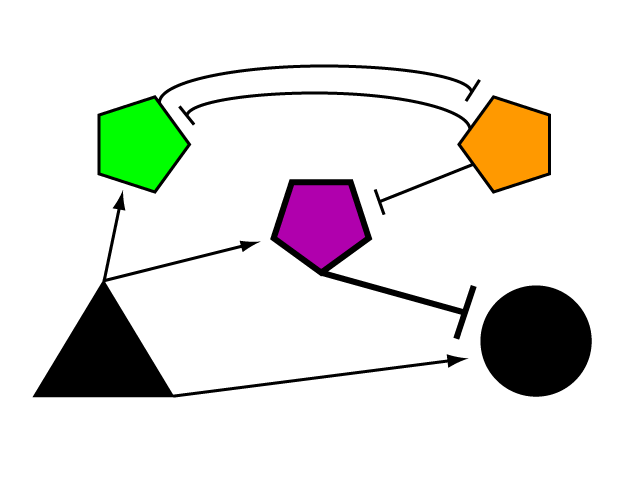Team:BrownTwo/Limiter/network
From 2008.igem.org
The Genetic Limiter
Leading to the limiter
If we were to introduce a repressor construct driven by a constitutive promoter, one might face the issue that continued expression of inducer A would surpass the repressor's ability to oppose gene G's activation. Thus, instead of a constitutive promoter, one could ensure that the repressor for the gene of interest is under the control of a promoter that also takes the same inducer A as an input. This means that the amount of repressor in the system scales with the amount of inducer. However, the introduction of a single repressor construct in this fashion will also result in passively lowering the level of gene expression for any given level of inducer. This means that G will be present in lower than normal quantities for normal amounts of inducer. To prevent such unwanted interference of endogenous transcription, one could incorporate a second repressor to inhibit the repressor. Of course, this system of repressors would need a way of detecting At this point, it is important to turn to a concept from electrical engineering for inspiration. The Bistable SwitchA bistable switch is a simple circuit in which, depending upon the nature or quantity of the input, two stable outcomes are possible. In one case, would allow the system to alternate between two modes of activity in response to varying levels of input. Dr. James Collins from Boston University developed a bistable switch capable of switching between two genetic outputs based upon the inputs to the system. Driven by the desire to create a synthetic gene network that could act similarly to endogenous regulatory pathways, we developed a design for a system that had the ability to regulate We began by developing a layout for
Diagram our network and explain why we laid it out this way.
|
 "
"

